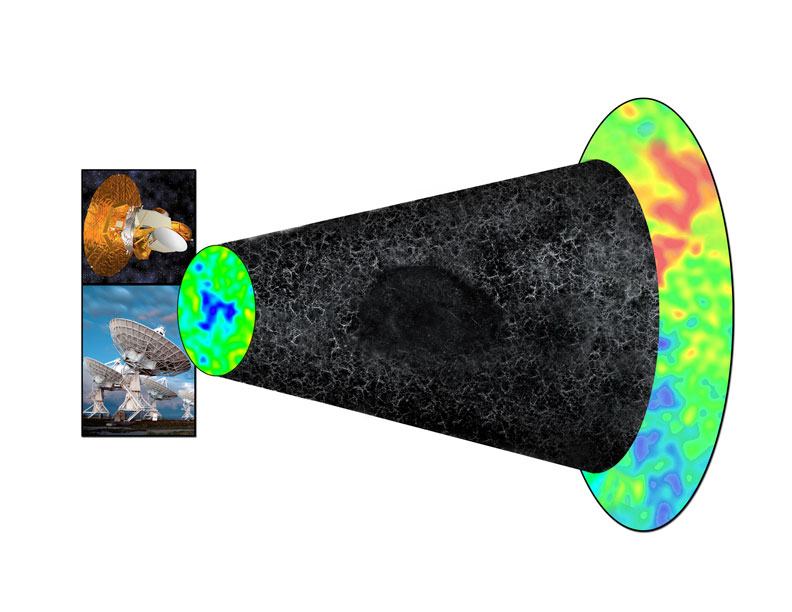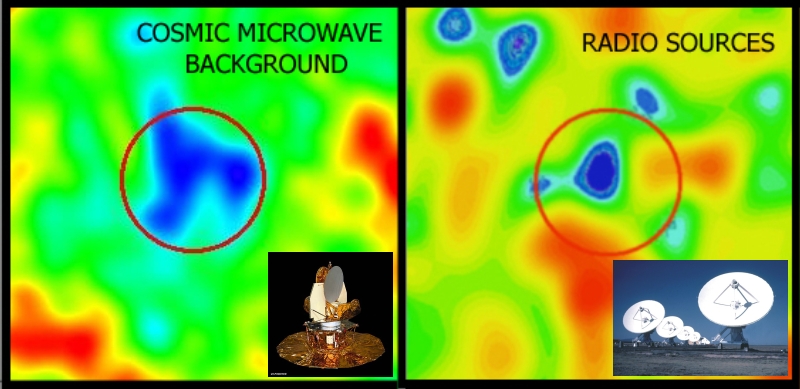Graphics: Astronomers Find Enormous Hole in the Universe

Illustration of the effect of intervening matter in the cosmos on the cosmic microwave background (CMB). On the right, the CMB is released shortly after the Big Bang, with tiny ripples in temperature due to fluctuations in the early Universe. As this radiation traverses the Universe, filled with a web of galaxies, clusters, superclusters and voids, it experiences slight perturbations. In the direction of the giant newly-discovered void, the WMAP satellite (top left) sees a cold spot, while the VLA (bottom left) sees fewer radio galaxies.
CREDIT: Bill Saxton, NRAO/AUI/NSF, NASA
Medium-resolution JPEG (278 KB)
High-resolution TIFF (34.3 MB)

Left: A 25-degree region of the Cosmic Microwave Background emission around
the region of the WMAP cold spot (circled). The colors represent very small
variations (parts in 100,000) around the average temperature of 2.7 degrees
above absolute zero, with blue colors being colder. Data are from NASA's
WMAP satellite.
Right: A heavily smoothed portion of the NRAO Very Large Array Sky Survey
(NVSS) showing the blended emission from radio galaxies along each path.
Blue colors represent brightnesses approximately 20% below the average.
CREDIT: Rudnick et al., NRAO/AUI/NSF, NASA
Above Image Without Telescope Images(114 KB)
